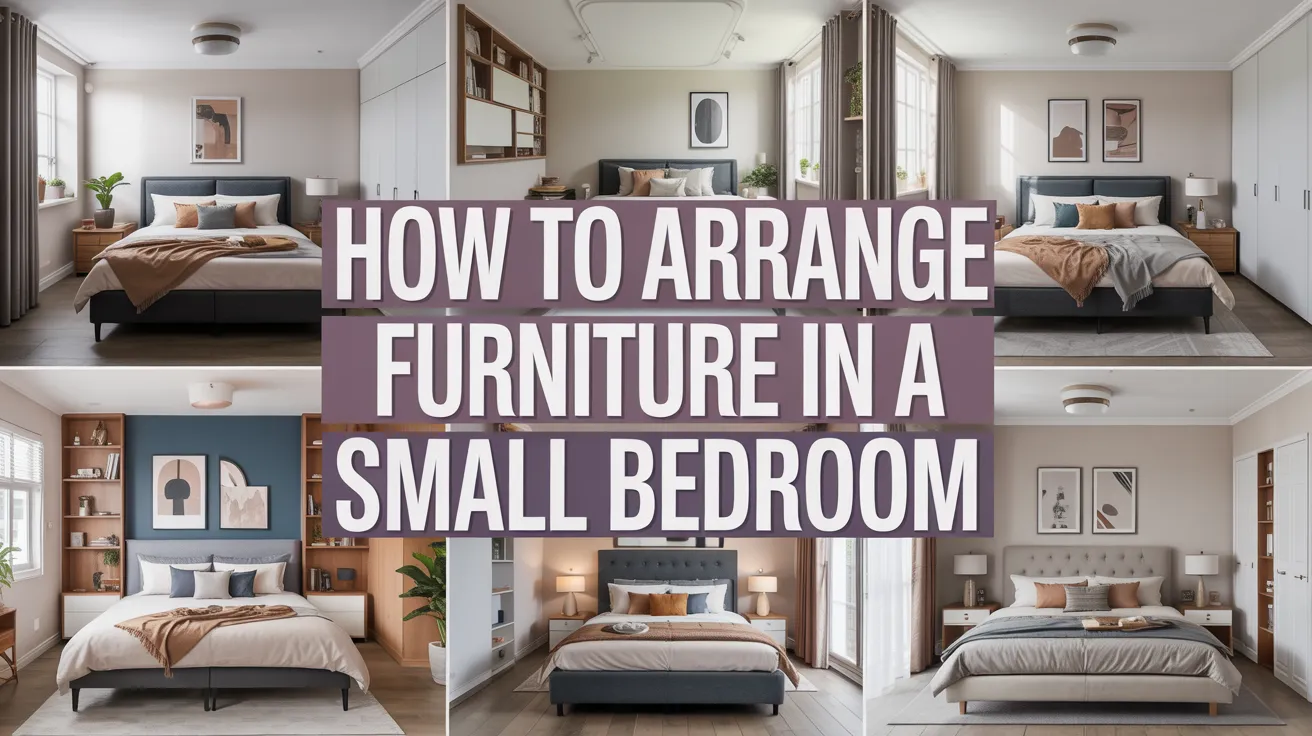How to Arrange Furniture in a Small Bedroom for Maximum Space
Arranging furniture in a small bedroom can feel challenging, but it becomes manageable by focusing on function and space. The key is to place the largest piece, usually the bed, in the best spot and build the layout around it. Prioritizing practical placement over decoration helps make the room feel open and easy to use.
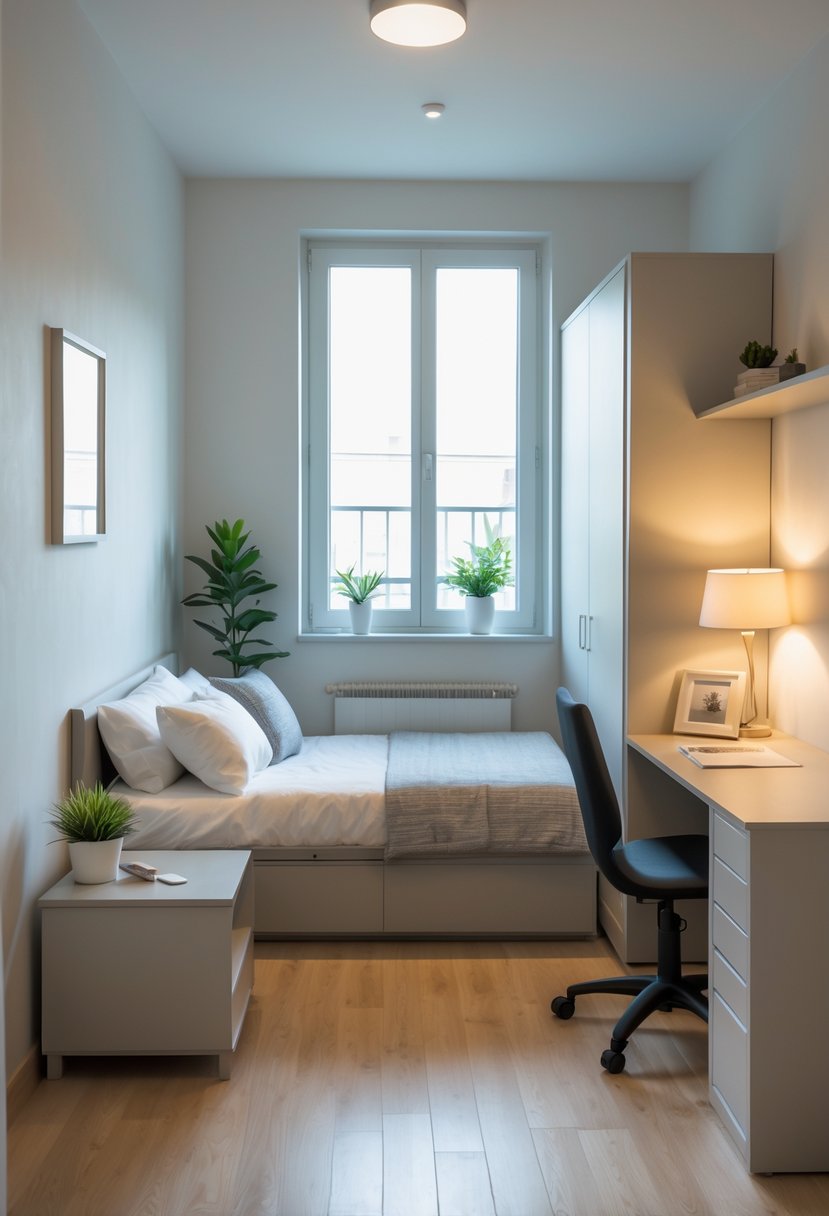
Measuring furniture before moving it in ensures everything fits well without overcrowding. Using vertical space with shelves or storage units and choosing lighter colors can also create a sense of openness. Small adjustments like sliding the bed to one side or choosing smaller pieces help maximize floor space.
A well-planned arrangement turns a cramped bedroom into a peaceful, comfortable place. Simple strategies like focusing on balance, using multi-purpose furniture, and clearing clutter can transform how the room feels and works every day.
Optimizing Furniture Layout in a Small Bedroom
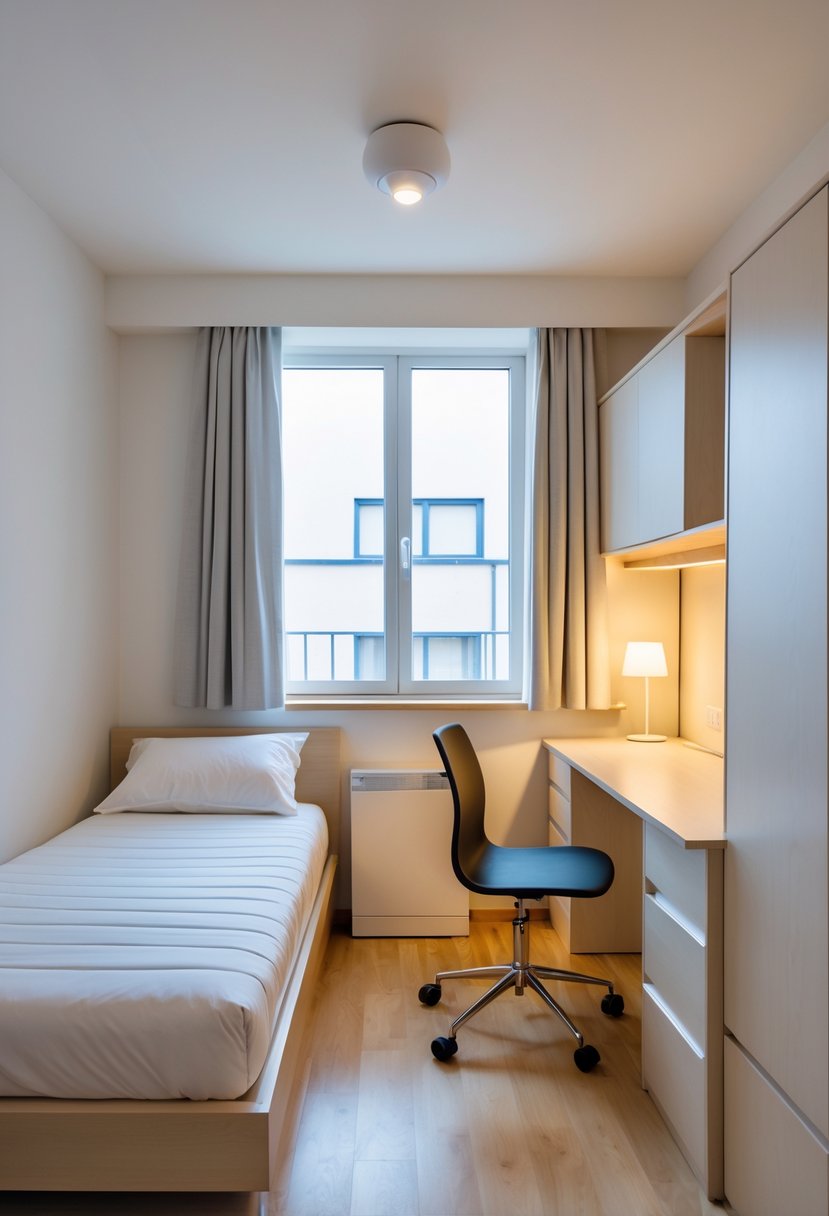
Arranging furniture in a small bedroom requires careful measurement, smart bed placement, and clear division of space. Each step helps use every inch efficiently, keeping the room functional without feeling cramped or cluttered.
Measuring Space and Planning Bedroom Layout
The first step is to measure the room accurately, including doors, windows, and any built-in features. Knowing the exact dimensions helps decide which furniture pieces will fit without overcrowding.
Use graph paper or a digital app to sketch the room. Mark the location of electrical outlets and light switches to avoid blocking them. Planning helps visualize different layouts before moving heavy items.
In a compact bedroom, clear floor space is key. Leave enough room to walk comfortably between furniture. A general rule is to keep at least 24 inches of walking space between pieces.
Bed Placement and Focal Points
The bed is the largest piece, so its placement defines the room’s layout. Positioning the headboard against the longest wall often works best. This creates balance and allows for nightstands or small storage on either side.
Alternatively, placing the bed in a corner can free up floor space. This corner bed layout opens the center of the room for easier movement and extra furniture like a chair or desk.
Make the bed the room’s focal point by keeping the area around it tidy and uncluttered. Avoid placing bulky furniture that blocks natural light or disrupts flow.
Zoning Different Functions Within the Room
In small bedrooms, combining functions in one area saves space. For example, use a desk that doubles as a dressing table. Floating shelves can store books or decor without taking floor space.
Create separate zones by arranging furniture to define sleeping, working, and storage areas clearly. Rugs or lighting can also mark these zones visually.
Avoid crowding one side of the room. Spread furniture evenly to keep the space balanced and comfortable. This helps the compact bedroom feel organized and purposeful.
Smart Storage Solutions and Functional Furnishing
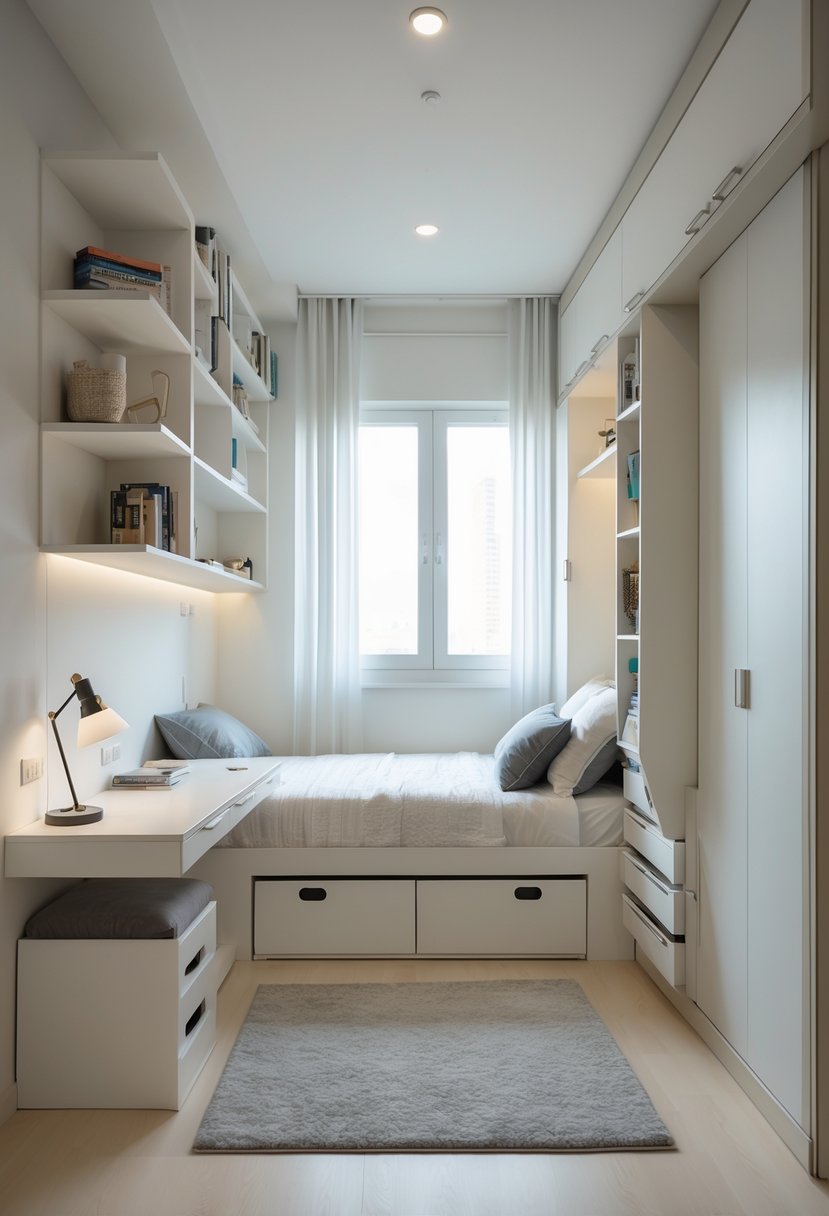
Small bedrooms require carefully planned storage and furniture choices to save space and keep the room organized. Using furniture that serves more than one purpose, thinking vertically, and adding hidden storage options help make the most of limited square footage. Lighting and mirrors also play a key role in making the room feel larger and less crowded.
Choosing Multi-Functional and Appropriately Sized Furniture
Selecting furniture that combines function with size is crucial in a small bedroom. Pieces like a nightstand with drawers provide storage without taking up extra floor space. A storage ottoman offers a place to sit while hiding blankets or other items inside.
Multi-functional furniture such as beds with built-in drawers or a small floating desk can free up floor space. Avoid bulky items and choose pieces scaled to the room size. For example, narrow dressers or compact wardrobes work better than wide, tall units that dominate a small room.
Maximizing Vertical Space and Wall Storage
Using vertical space helps keep floors clear and organizes items efficiently. Installing floating shelves on walls provides storage for books, decor, or small containers. These shelves take up no floor room and add style.
Wall hooks and pegboards can hang bags or accessories near the door. Wall-mounted sconces save space compared to table lamps and provide focused lighting. Placing higher storage like cabinets or shelves near the ceiling uses often neglected space without crowding the room.
Incorporating Hidden and Under-Bed Storage
Hidden storage creates space without affecting the room’s look. Under-bed storage bins or drawers use a spot often wasted in small bedrooms. These are perfect for storing seasonal clothes, shoes, or bedding.
Furniture with built-in compartments, like ottomans or beds with drawers, keeps clutter out of sight. Choosing a bed with storage underneath or a headboard with shelves adds function without extra furniture pieces. This approach helps maintain a neat, open feel.
Lighting and Mirrors to Enhance Perceived Space
Proper lighting and mirrors can make a cramped bedroom seem more open. Using wall-mounted sconces frees space on side tables and adds even light layers. Avoid heavy lamps that take floor or surface space.
A full-length mirror reflects light and depth, visually expanding the room. Positioning a mirror across from a window or light source maximizes this effect. Combining smart lighting with mirrors enhances brightness and softness, making the space more inviting and less confined.
Conclusion
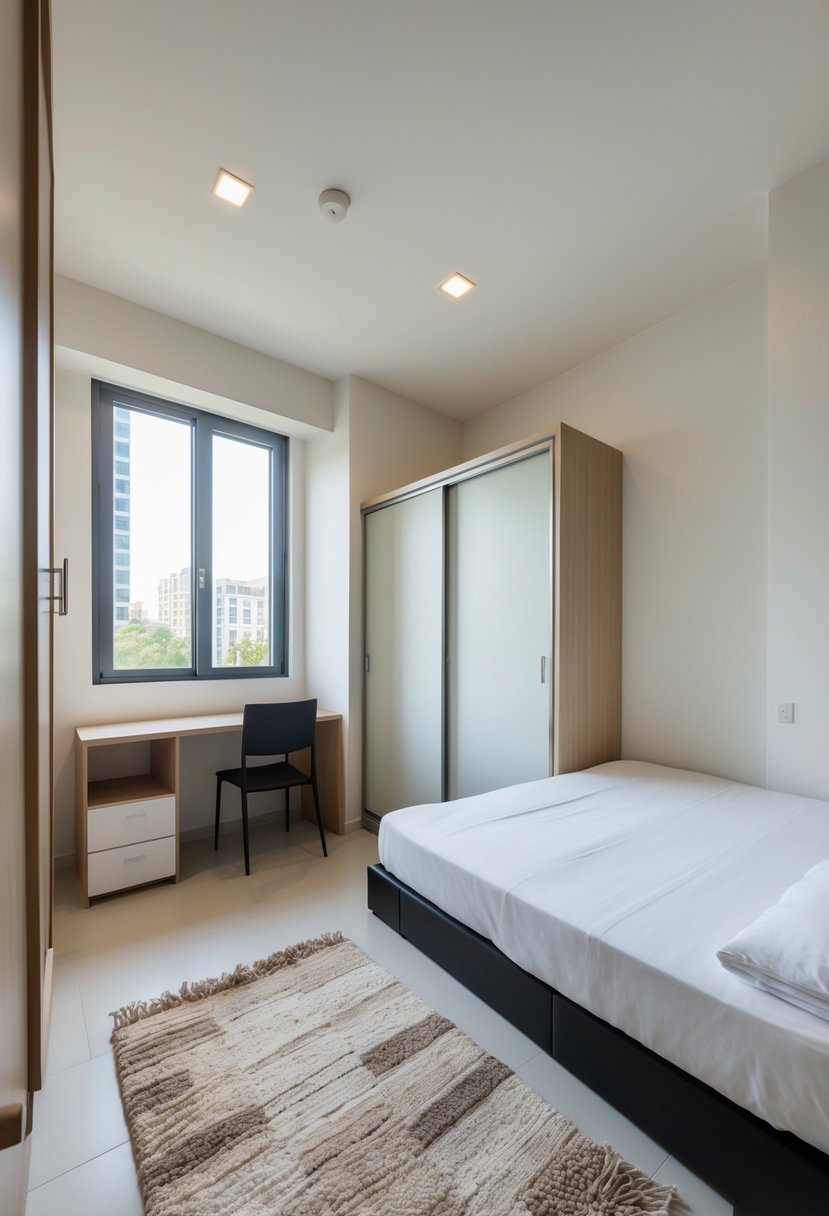
Arranging furniture in a small bedroom requires careful planning and thoughtful choices. Starting with the bed placement sets the tone for the rest of the room’s layout. Practicality should guide decisions rather than purely aesthetics.
Using multi-functional furniture helps save space. Items like dressers with drawers or beds with under-bed storage add value without crowding the room. Vertical storage such as shelves or wall hooks maximizes the use of wall space.
Balancing the room with either a symmetrical or asymmetrical layout depends on the room’s features, such as door and window placement. It is important to leave enough space for easy movement around the furniture.
A consistent color palette reduces visual clutter. Choosing light tones can make the room feel more open, while darker shades create a cozy atmosphere.
Key strategies to remember:
- Measure furniture before buying
- Prioritize functionality
- Maintain clear pathways
- Use vertical and under-bed storage
By following these practical steps, a small bedroom can feel organized, functional, and comfortable. Furniture arrangement should enhance daily routines and make the most of the limited space available.

